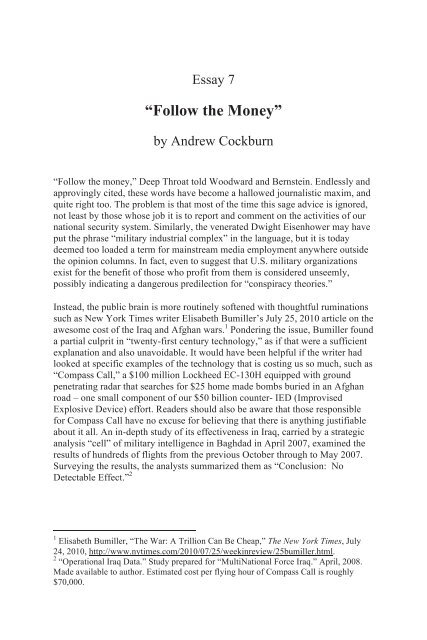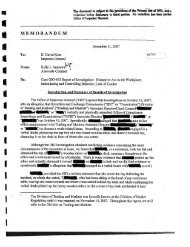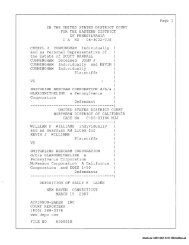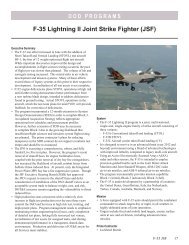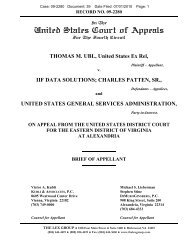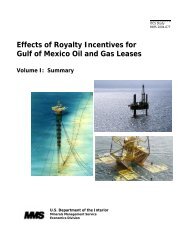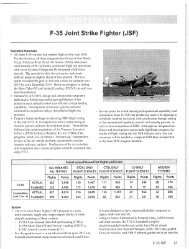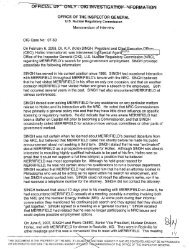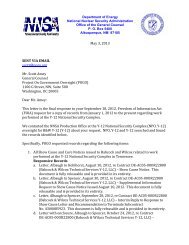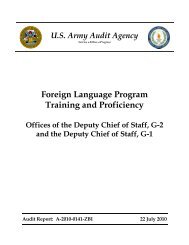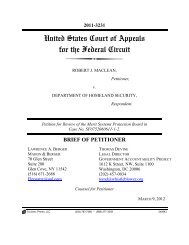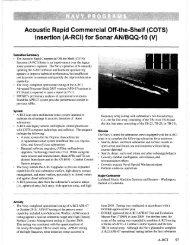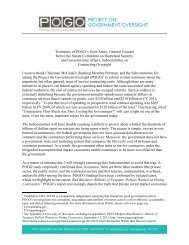The Pentagon Labyrinth
The Pentagon Labyrinth
The Pentagon Labyrinth
Create successful ePaper yourself
Turn your PDF publications into a flip-book with our unique Google optimized e-Paper software.
Essay 7<br />
“Follow the Money”<br />
by Andrew Cockburn<br />
“Follow the money,” Deep Throat told Woodward and Bernstein. Endlessly and<br />
approvingly cited, these words have become a hallowed journalistic maxim, and<br />
quite right too. <strong>The</strong> problem is that most of the time this sage advice is ignored,<br />
not least by those whose job it is to report and comment on the activities of our<br />
national security system. Similarly, the venerated Dwight Eisenhower may have<br />
put the phrase “military industrial complex” in the language, but it is today<br />
deemed too loaded a term for mainstream media employment anywhere outside<br />
the opinion columns. In fact, even to suggest that U.S. military organizations<br />
exist for the benefit of those who profit from them is considered unseemly,<br />
possibly indicating a dangerous predilection for “conspiracy theories.”<br />
Instead, the public brain is more routinely softened with thoughtful ruminations<br />
such as New York Times writer Elisabeth Bumiller’s July 25, 2010 article on the<br />
awesome cost of the Iraq and Afghan wars. 1 Pondering the issue, Bumiller found<br />
a partial culprit in “twenty-first century technology,” as if that were a sufficient<br />
explanation and also unavoidable. It would have been helpful if the writer had<br />
looked at specific examples of the technology that is costing us so much, such as<br />
“Compass Call,” a $100 million Lockheed EC-130H equipped with ground<br />
penetrating radar that searches for $25 home made bombs buried in an Afghan<br />
road – one small component of our $50 billion counter- IED (Improvised<br />
Explosive Device) effort. Readers should also be aware that those responsible<br />
for Compass Call have no excuse for believing that there is anything justifiable<br />
about it all. An in-depth study of its effectiveness in Iraq, carried by a strategic<br />
analysis “cell” of military intelligence in Baghdad in April 2007, examined the<br />
results of hundreds of flights from the previous October through to May 2007.<br />
Surveying the results, the analysts summarized them as “Conclusion: No<br />
Detectable Effect.” 2<br />
1 Elisabeth Bumiller, “<strong>The</strong> War: A Trillion Can Be Cheap,” <strong>The</strong> New York Times, July<br />
24, 2010, http://www.nytimes.com/2010/07/25/weekinreview/25bumiller.html.<br />
2 “Operational Iraq Data.” Study prepared for “MultiNational Force Iraq.” April, 2008.<br />
Made available to author. Estimated cost per flying hour of Compass Call is roughly<br />
$70,000.


